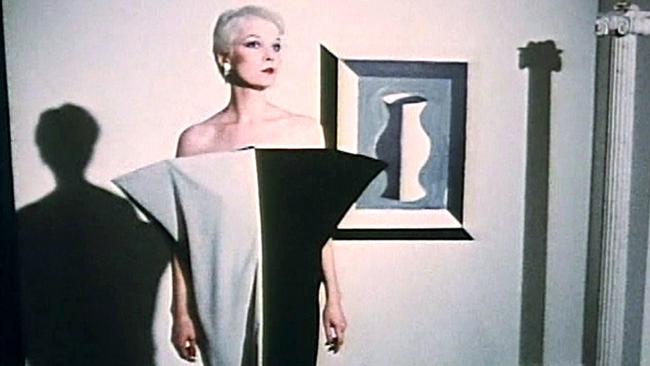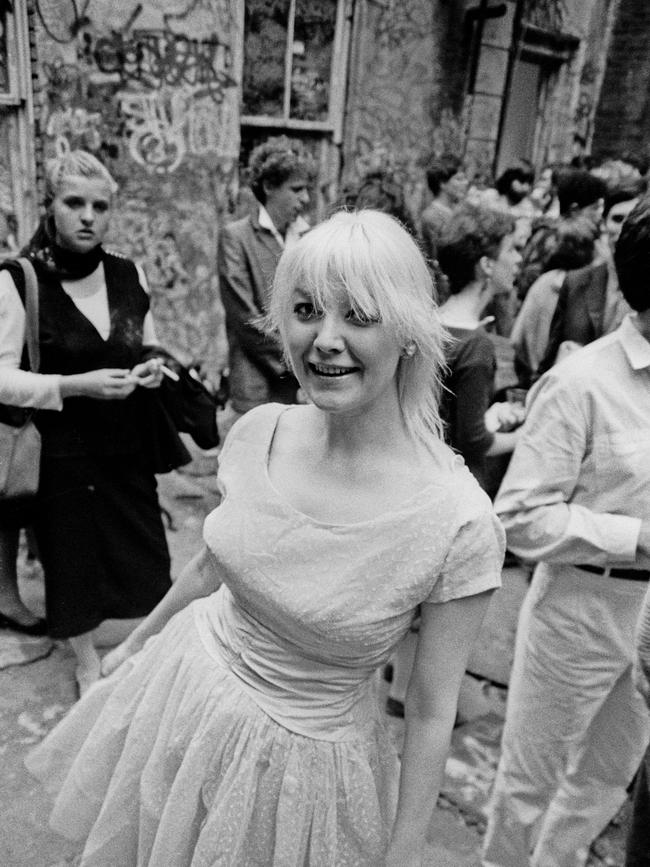How Patti Astor created the lucrative market for street art
Patti Astor was the doyenne of the avant-garde scene and co-founder of the Fun Gallery in New York’s East Village where she championed street art.

OBITUARY
Patti Astor Art dealer, avant-garde scene-maker.
Born Cincinnati, Ohio, March 17, 1950; died Hermosa Beach, California, April 9, aged 74.
When Patti Astor opened the Fun Gallery in New York’s East Village in 1981 graffiti art was found only on the street. Scouring the Big Apple’s five boroughs for the aerosol artists whose tag names she saw on murals sprayed on derelict walls and the New York subway, she brought them in off the streets and offered them gallery space. In doing so she almost single-handedly invented the market for street art that led to Banksy’s works selling for millions at Sotheby’s.
The list of the graffiti artists she championed is evocative. Dondi, Futura 2000, Fab 5 Freddy, Zephyr, Revolt, Lady Pink, Crash, Daze, Quik and countless others exhibited at the Fun Gallery. So did Keith Haring and Jean-Michel Basquiat, one of the most saleable names in modern American art and an acknowledged influence on Banksy. The Basquiat show that Astor staged in 1982 was a seminal moment in his career. Limousines crammed the street for the opening and 40 years later a Basquiat triptych from the exhibition was priced by Christie’s at $US36m.
Astor established the Fun Gallery first because she genuinely admired the “fabulous talent and energy” in the ad hoc murals she saw on the street and that might remain for as little as a day before officialdom had them removed or painted over. Second, her punk sensibilities revolted against the uptown art world she regarded as pretentious and artificial. “It was white wine, white walls, white people; the art world was closed off and boring,” she said in 2013 when she published a history of her gallery. “The success of the Fun Gallery was to open up the art world to everybody,” she wrote.
Indeed, the gallery was populated by squadrons of young graffiti kids night and day and also became a magnet for rappers, punks, hipsters, bohemians and avant-gardists of every stripe seeking a refuge from the rigidity of the art mainstream. It was located in an insalubrious downtown area; Astor recalled that there were also “guys sticking knives in my face, garbage cans through the windows, neighbourhood mafia coming around for payoffs and heroin addicts passed out in the doorway”. But as a former student protest leader who had run the gamut of batons and tear gas canisters, she was unfazed. “After you’ve had your ass kicked by the police a few times that other shit is nothing,” she said.
The gallery came about following a house party Astor threw in her seedy $US65-a-month apartment in the Bowery. She had asked graffiti artist Futura 2000 to create a mural on her wall, in part to cover up the mould and damp patches, and when he had finished she invited friends over to celebrate.
They included Bill Stelling, who offered to cover the rent to open a small gallery. “Other than Bill’s belief in the artists and me we never had a backer,” Astor recalled. “But our rent was $US125, so we were willing to take that chance.” Stelling wanted to call it the Serious Gallery but Astor had bought stationery emblazoned “fun” and “the name was so stupid it stuck”, she recalled.

Before long, museum directors, art historians and uptown collectors in mink coats and limos were making their way downtown to check out what was going on. Astor, who saw her gallery as a space for artists, not collectors, was unimpressed. “The flipside was that all of a sudden a lot of money started to get thrown around by art scene people who smelt a fast buck,” she said.
The gallery closed in 1985, partly a victim of its own success. “The art establishment moved in and galleries were coming in putting in $US400,000 to renovate the buildings down the street,” Astor noted acidly. “Gentrifying motherf..kers. I couldn’t compete with that. Nor did I want to.”
Nevertheless, in four short years she had changed the trajectory of modern art, elevating a multiracial cast of artists who went on to be feted by a predominantly white art world that had not previously recognised street culture.
Spiky and outspoken on most subjects, Astor was nevertheless modest about her contribution to the revolution she helped to bring about. “One reason I got along so well with the graffiti guys was that they had really good pot,” she said. “People are always saying I should promote the fact that I discovered them, but those guys would have been successful even if I hadn’t been there.”
She was born Patricia Titchener in 1950 in Cincinnati, Ohio, the eldest of four children of James, a psychoanalyst, and Antoinette (nee Baca), a pediatrician. She enjoyed a privileged upbringing, training as a dancer with the Cincinnati Civic Ballet. At 18 she moved to New York and enrolled at Barnard College, University of Columbia, but dropped out to become a leader of the left-wing anti-Vietnam war group, Students for a Democratic Society.
She toured with her dance act, called A Diamond As Big As The Ritz, around the US and Europe but by 1975 she was back in New York. Hoping to become an actor, she took the name Patti Astor and, unable to afford drama classes, got a job as a janitor at Lee Strasberg’s Actors Studio.
She appeared in more than a dozen underground films including Amos Poe’s Unmade Beds, a loose adaptation of Jean-Luc Godard’s Breathless, with Blondie singer Debbie Harry. She hung out at punk clubs such as CBGB and married Steven Kramer, a keyboardist with the band the Contortions. Kramer was also a visual artist and his work was the subject of the first show at the Fun Gallery. They later divorced and Astor moved to a trailer-park surf community in Los Angeles.
She made only occasional forays back into the art world but worked on the Los Angeles Museum of Contemporary Art’s landmark 2011 graffiti show Art in the Streets.
“When something comes from the heart it will prevail,” she said, when asked to explain why graffiti art had been embraced by the mainstream.
The Times






To join the conversation, please log in. Don't have an account? Register
Join the conversation, you are commenting as Logout